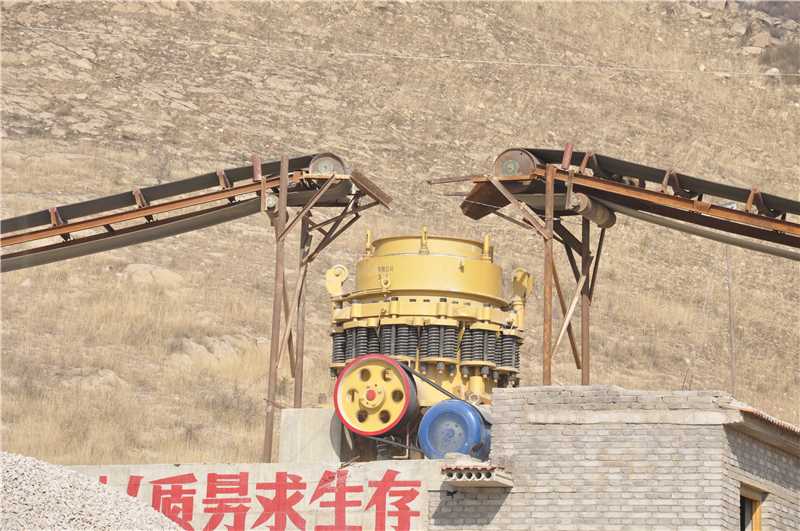Solving High Cone Crusher Maintenance Frequency in Copper Ore Crushing
Cone crushers are the backbone of most copper ore crushing operations, essential for reducing rock to a size suitable for processing and beneficiation. However, when these powerful machines experience high maintenance frequency, the costs extend far beyond parts and labor. Unscheduled crusher downtime can halt an entire production line, severely impacting profitability and project timelines. The solution isn’t just about repairing the crusher; it’s about a strategic approach that addresses the root causes of premature wear and failure.

Understanding the Root Causes of Premature Wear
Before implementing a solution, it’s vital to identify the reasons behind the high maintenance frequency in your specific copper ore crushing application.
- Inconsistent Feed: This is a leading cause of problems. Feeding the crusher with too much fine material, oversized lumps, or an inconsistent mix of the two puts undue stress on the machine, leading to inefficient crushing and excessive wear on the mantle and concave liners.
- Abrasive Ore Properties: While copper ore crushing is the goal, the actual mineralogy of the host rock varies. Some ores, particularly those with a high quartz content, are highly abrasive and will naturally cause faster wear on wear parts.
- Improper Operating Settings: Operating the crusher with a discharge setting that is too tight or at an incorrect speed for the material can lead to a phenomenon known as “bridging,” which increases mechanical strain and friction, accelerating wear.
- Inadequate Lubrication: It’s a fundamental principle, but often overlooked. Improper or infrequent lubrication leads to excessive friction, heat buildup, and eventual failure of internal components like bearings and gears.
Actionable Strategies to Reduce Downtime
Here are some proven strategies to combat high cone crusher maintenance frequency and boost your operation’s crushing efficiency:
- Optimize the Crushing Circuit: The simplest and most effective solution is to install a pre-screen before the cone crusher. This removes fine material (often containing abrasive dust and clay) that clogs the crushing chamber and puts unnecessary stress on the machine. By feeding the crusher with properly sized material, you allow it to work as intended, extending the life of wear parts.
- Implement a Predictive Maintenance Plan: Move away from a “fix-it-when-it-breaks” mentality. A predictive maintenance plan involves regular monitoring of key performance indicators, such as oil temperature, oil contamination, vibration levels, and power consumption. By analyzing this data, you can identify potential issues before they cause a breakdown, allowing for scheduled, proactive maintenance.
- Choose the Right Wear Parts: Investing in high-quality wear parts designed specifically for the properties of your copper ore is crucial. While cheaper alternatives might save money upfront, they often wear out faster, leading to more frequent downtime and a higher long-term cost of ownership.
- Ensure Consistent Feed and Choke Feeding: Use a feed bin and a conveyor or vibrating feeder to provide a consistent, choke-fed stream of material into the crusher. A choke-fed crusher operates more efficiently with a full crushing chamber, which promotes rock-on-rock crushing and reduces wear on the mantle and concave.
The Role of Technology and Training
Modern technology and proper training are also key to reducing maintenance woes. Well-trained operators understand how to adjust crusher settings for different types of ore and can spot early signs of trouble. Many modern cone crushers are also equipped with automation and remote monitoring systems. These technologies can automatically adjust settings to maintain a consistent output and can alert operators to potential issues, allowing for intervention before a catastrophic failure occurs.
Conclusion
High cone crusher maintenance frequency is a common and costly problem in copper ore crushing, but it is entirely solvable. By taking a proactive and strategic approach—from optimizing your crushing circuit to implementing a robust predictive maintenance plan—you can significantly extend the lifespan of your crushing equipment. This not only reduces crusher downtime and maintenance costs but also boosts the overall productivity and profitability of your entire operation.
- > Suitability of Mobile Crushing Plants in Mining Operations
- > The Role of Vibrating Feeders in Chile’s Mining Industry
- > The Application of Mobile Jaw Crushers for Limestone in South Africa
- > Utilization of Iron Ore in Construction Materials and the Role of the PE600x900 Jaw Crusher
- > High-Quality Stone Vibrating Feeder: The ZSW Series
- > Advantages and Disadvantages of Using Vertical Impact Crushers for Nickel Ore Processing
- > Mobile Jaw Crusher: What Types of Rocks Are Suitable for Crushing?
- > Efficient 100-150 TPH Cone Crusher for Nickel Laterite Ore Processing
Hot Product


Online




Message
